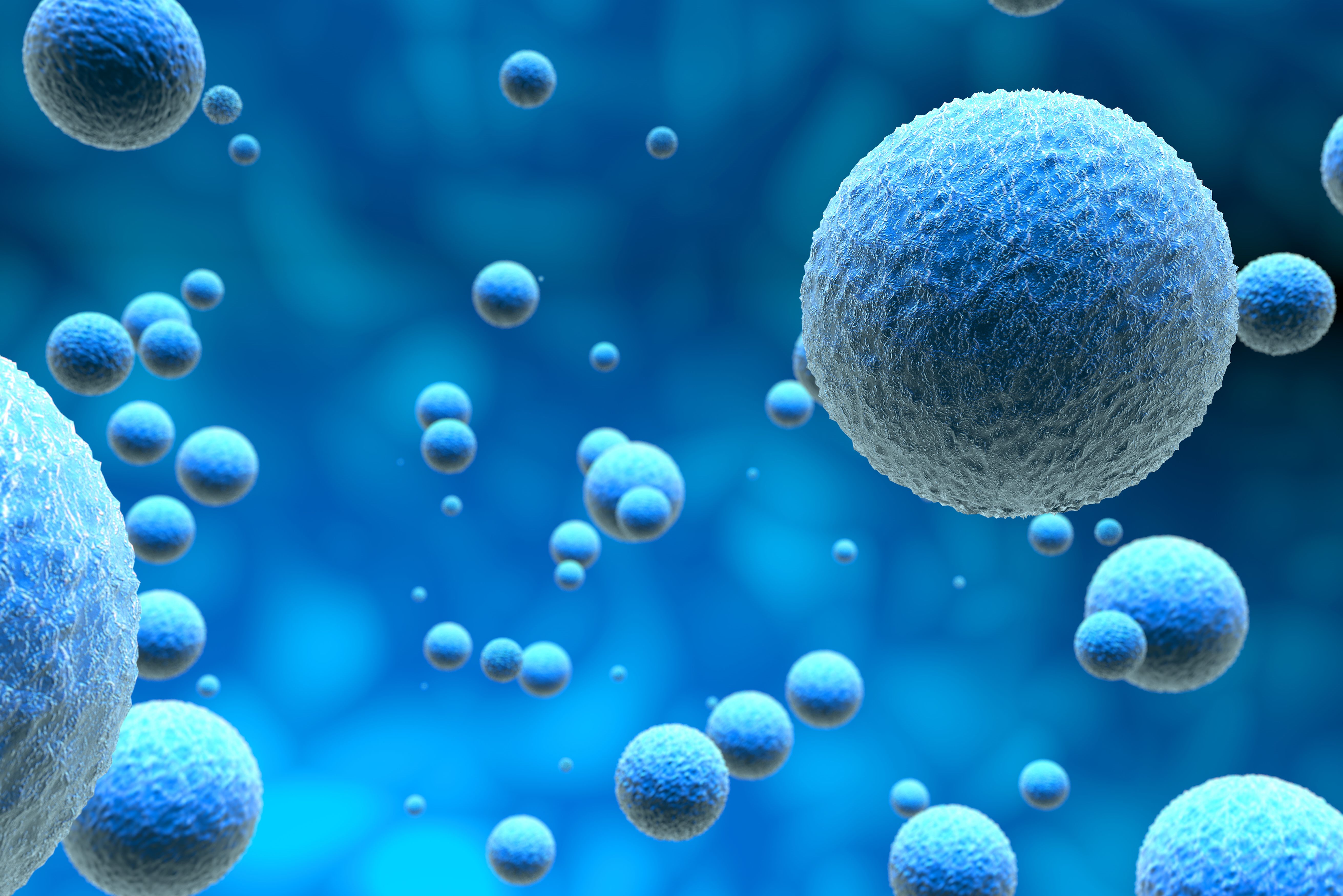
(Vienna, 22 November 2018) A research team from the Department of Biomedical Imaging and Image-guided Therapy, working together with the Division of Oncology of the Department of Medicine I, has for the first time managed to identify protein patterns from extracellular vesicles of chemoresistant cancer cells using Matrix-Assisted Laser Desorption/Ionisation Mass Spectrometry (MALDI-MS). The researchers were able to show that, using multivariate statistics, it is possible to differentiate between different levels of chemoresistance.
One of the greatest hurdles in cancer chemotherapy is the development of resistance to the drug being used. One of the main questions is how initially sensitive cells can develop resistance and how this then spreads throughout the body. Investigations have shown that extracellular vesicles (EVs) stemming directly from the tumour cells are responsible for the dissemination of molecular information (e.g. DNA, RNA etc.) in the body and can therefore "reprogramme" healthy cells. EVs are cellular organelles in the nanometre range, which are to be found in practically all human and animal body fluids. In contrast to invasive tissue biopsies, diagnosis from body fluids (liquid biopsy) enables patients to be checked much more frequently and less invasively, to allow better monitoring of treatment progress. However, due to the minimal size and concentration of EVs, extremely sensitive techniques are required to exploit their full diagnostic potential analytically.
Matrix-Assisted Laser Desorption/Ionisation Mass spectrometry (MALDI-MS) is not only a very sensitive but also a robust and cost-effective method of analysis. A particular advantage of this technique is that it allows a broad spectrum of molecules from practically all types of biological samples (e.g. cell cultures, tissue, body fluids etc.) to be measured, thereby creating a "biomarker profile". It usually only takes a fraction of a minute to take a sample. This makes MALDI-MS a particularly attractive option for clinical diagnostics.
Different levels of chemoresistance in cancer cells can be differentiated
Whilst MALDI-MS is already routinely used throughout the world for identifying bacteria, its application in cancer diagnosis is still in its infancy. The research team led by Gerald Stübiger from the Department of Biomedical Imaging and Image-guided Therapy, working with Robert Mader from the Division of Oncology of the Department of Medicine I, has now succeeded, for the first time, in using this technique for identifying protein patterns from EVs of chemoresistant cancer cells. They showed that, by using multivariate statistics, it is possible to differentiate between different levels of chemoresistance in cancer cells, based on the protein pattern of EVs. For this, the researchers used a cellular colon cancer model, consisting of sensitive, primary tumour cells and a lymph node metastases cell line and its subclones with increasing resistance to 5-fluorouracil. As the experiments showed, the quantities of EVs isolated from cell supernatants would be enough to establish a characteristic protein profile from a few millilitres of blood, using MALDI-MS. "Surprisingly, the EV data supplied even better results than the corresponding starting cells themselves. This suggests that the EVs expressed specific proteins, which are directly associated with adaptation of the cells to increasing doses of chemotherapy drugs and which may be associated with their proliferation in the body in the course of metastasis. Translated to a living organism, this constitutes a strong argument for the advantages of liquid biopsy. The next step in the researchers' strategy will now be to identify protein markers, in order to gain a better understanding of the underlying mechanisms so that they can then be applied clinically.
"Our study opens the door to a completely new field of application for MALDI-MS in clinical diagnostics and beyond," explains Gerald Stübiger. Due to the universal prevalence of EVs, there are essentially no limits on the technique. However, isolating the vesicles themselves still presents a challenge, as it is a very laborious and time-consuming process. There is therefore still quite a bit of development work to do and financial support is needed. "We hope that our paper will attract wide interest and bring us new partners from research and industry," says Stübiger.
Service:
Stübiger G, Nairn MD, Abban TK, Openshaw ME, Mancera L, Herzig B, Wuczkowski M, Senfter D, Mader RM. MALDI-MS Protein Profiling of Chemoresistance in Extracellular Vesicles of Cancer Cells. Anal Chem. 2018 Nov 1. doi: 10.1021/acs.analchem.8b03756. [Epub ahead of print]